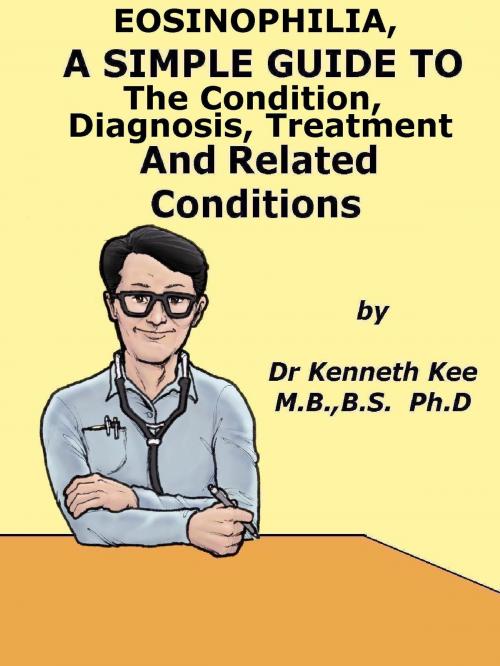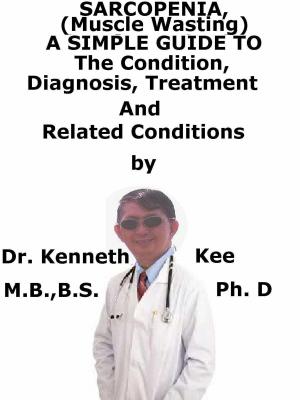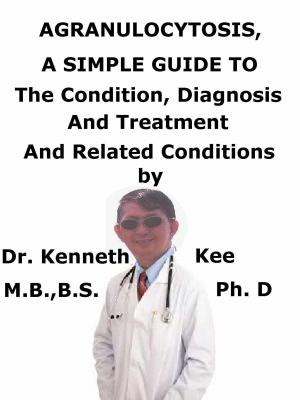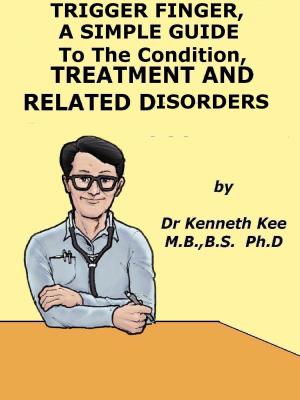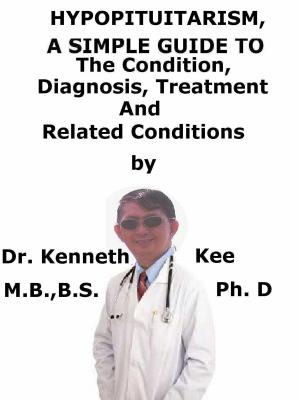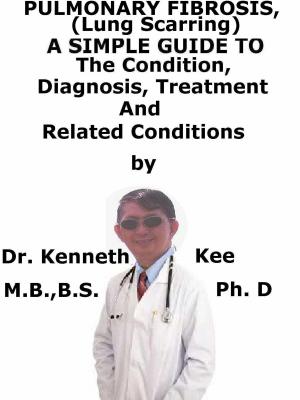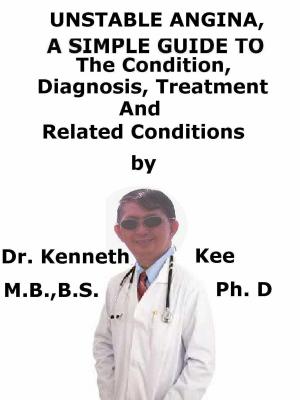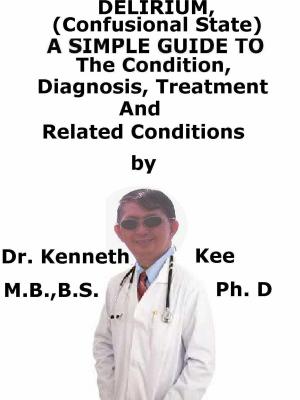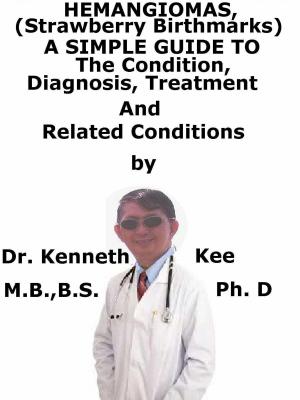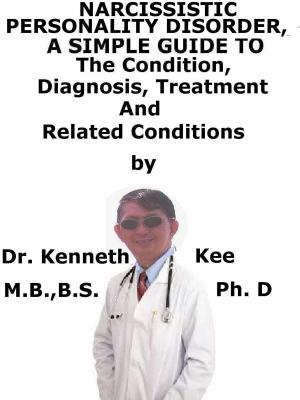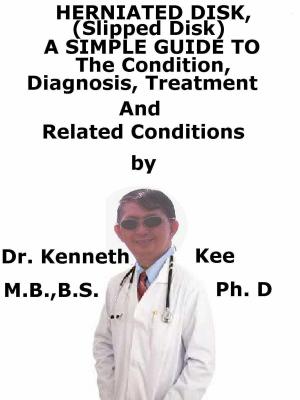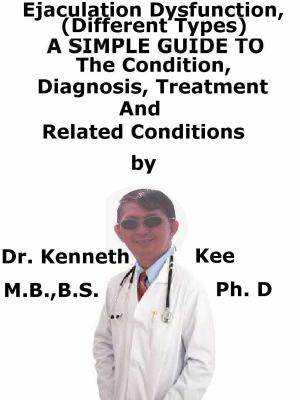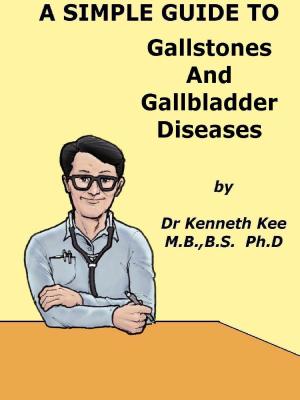Eosinophilia, A Simple Guide To The Condition, Diagnosis, Treatment And Related Conditions
Nonfiction, Health & Well Being, Medical, Specialties, Internal Medicine, Hematology, Health, Ailments & Diseases, Allergies| Author: | Kenneth Kee | ISBN: | 9781370916887 |
| Publisher: | Kenneth Kee | Publication: | October 15, 2016 |
| Imprint: | Smashwords Edition | Language: | English |
| Author: | Kenneth Kee |
| ISBN: | 9781370916887 |
| Publisher: | Kenneth Kee |
| Publication: | October 15, 2016 |
| Imprint: | Smashwords Edition |
| Language: | English |
Eosinophilia is a condition where there is an abnormally large amount of eosinophils in the blood or body tissues.
Eosinophilia is a peripheral eosinophil count higher than the upper limit of normal range, usually around 0.45 x 109/L.
In many cases the reason of the cause is obvious - e.g., atopic disease.
1. Eosinophilia is most frequently due to allergic conditions.
2. Helminth infections are the second most frequent cause of eosinophilia.
3. Travel history to evaluate whether a patient has traveled to an area that is endemic for certain infections, especially helminthic infections.
4. Medication and diet history to assess for allergic reactions linked with eosinophilia.
5. History of symptoms linked with possible underlying causes.
A complete medical examination is needed because diseases linked with eosinophilia can involve any part of the body.
Diagnosis is based on the history, examination, and clinical picture:
1. FBC, including differential white cell count.
2. Renal function tests, LFTs.
3. Urine tests: all patients with blood eosinophilia and hematuria and who have been in Africa should have their urine examined for the eggs of Schistosoma hematobium.
4. Cystoscopy may be needed to confirm the diagnosis.
5. Lumbar puncture: CSF eosinophilia due to worm parasitic infections (e.g., Angiostrongylus cantonensis), drug reactions, and coccidioidomycosis meningitis.
6. CT scans of the lungs, abdomen, pelvis, and brain assess for focal defects due to diverse causes of eosinophilia such as:
a. Worm infections of the liver (e.g., Fasciola hepatica)
Treatment:
After a proper diagnosis, the doctor will try to find the cause in that specific case.
A few simple skin or blood tests may be done further to show specific allergies like pollen or dust mite allergy.
Parasitic infection can be found by analyzing blood and stool samples.
Any new medication taken by the patient is checked if it is a side effect.
Once the cause has been found, the treatment is specially done to remove the underlying disorder whether it is an allergy, medical reaction or parasitic infection.
In the case of hyper-eosinophilic syndrome, oral corticosteroid therapy (a derivative of natural hormones that the body causes to limit inflammatory responses) is given.
If that does not work, a immunosuppressant agent is given.
TABLE OF CONTENT
Introduction
Chapter 1 Eosinophilia
Chapter 2 Causes
Chapter 3 Symptoms
Chapter 4 Diagnosis
Chapter 5 Treatment
Chapter 6 Prognosis
Chapter 7 Allergies
Chapter 8 Asthma
Epilogue
Eosinophilia is a condition where there is an abnormally large amount of eosinophils in the blood or body tissues.
Eosinophilia is a peripheral eosinophil count higher than the upper limit of normal range, usually around 0.45 x 109/L.
In many cases the reason of the cause is obvious - e.g., atopic disease.
1. Eosinophilia is most frequently due to allergic conditions.
2. Helminth infections are the second most frequent cause of eosinophilia.
3. Travel history to evaluate whether a patient has traveled to an area that is endemic for certain infections, especially helminthic infections.
4. Medication and diet history to assess for allergic reactions linked with eosinophilia.
5. History of symptoms linked with possible underlying causes.
A complete medical examination is needed because diseases linked with eosinophilia can involve any part of the body.
Diagnosis is based on the history, examination, and clinical picture:
1. FBC, including differential white cell count.
2. Renal function tests, LFTs.
3. Urine tests: all patients with blood eosinophilia and hematuria and who have been in Africa should have their urine examined for the eggs of Schistosoma hematobium.
4. Cystoscopy may be needed to confirm the diagnosis.
5. Lumbar puncture: CSF eosinophilia due to worm parasitic infections (e.g., Angiostrongylus cantonensis), drug reactions, and coccidioidomycosis meningitis.
6. CT scans of the lungs, abdomen, pelvis, and brain assess for focal defects due to diverse causes of eosinophilia such as:
a. Worm infections of the liver (e.g., Fasciola hepatica)
Treatment:
After a proper diagnosis, the doctor will try to find the cause in that specific case.
A few simple skin or blood tests may be done further to show specific allergies like pollen or dust mite allergy.
Parasitic infection can be found by analyzing blood and stool samples.
Any new medication taken by the patient is checked if it is a side effect.
Once the cause has been found, the treatment is specially done to remove the underlying disorder whether it is an allergy, medical reaction or parasitic infection.
In the case of hyper-eosinophilic syndrome, oral corticosteroid therapy (a derivative of natural hormones that the body causes to limit inflammatory responses) is given.
If that does not work, a immunosuppressant agent is given.
TABLE OF CONTENT
Introduction
Chapter 1 Eosinophilia
Chapter 2 Causes
Chapter 3 Symptoms
Chapter 4 Diagnosis
Chapter 5 Treatment
Chapter 6 Prognosis
Chapter 7 Allergies
Chapter 8 Asthma
Epilogue
